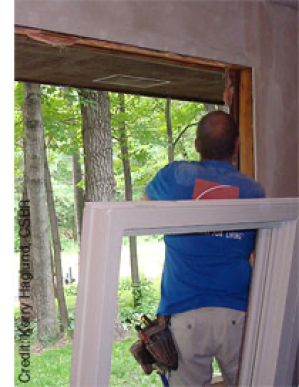
Insert Replacement Windows
 Insert Replacement Windows
Insert Replacement Windows
When replacing with insert windows, the old sash, side jambs, and trim are removed, but the
original frame is left in place. The new window is inserted into this opening.
This is a good option when:
• The old sill and frame are in good condition.
• The insert can be installed into the existing construction in a square and structurally sound way.
• Casing and trim need to remain in place.
• Since the insert window sits inside the original window frame, the overall glass area may be reduced compared to the original window. The benefit of insert windows is that the interior and exterior finish materials (i.e., wallpaper, paint, siding) are not compromised. Slightly out-of-square conditions of the existing frame should be accommodated, if possible. Significant out-of-square conditions should be fixed with complete window replacement.
 Full Window Replacement
Full Window Replacement
When doing a full window replacement, the existing frame is completely removed and the new
window placed into the rough opening that was occupied by the old window.
This is a good option when:
• The old window frame is deteriorated.
• A larger opening is required by choice or by code.
• You want to maximize energy efficiency.
• The existing frame will not allow for an insert window.
• When doing a full window replacement, there is the opportunity to fix issues such as water or air leakage that may have occurred around the old frame.
Compare Annual Energy Costs for Replacement Windows in a Typical House
Use the Window Selection Tool to compare the annual energy performance of different window types and design conditions for a typical house. Find manufacturers who offer windows and skylights within the generic results shown. Learn more about manufacturers’ specific product options.